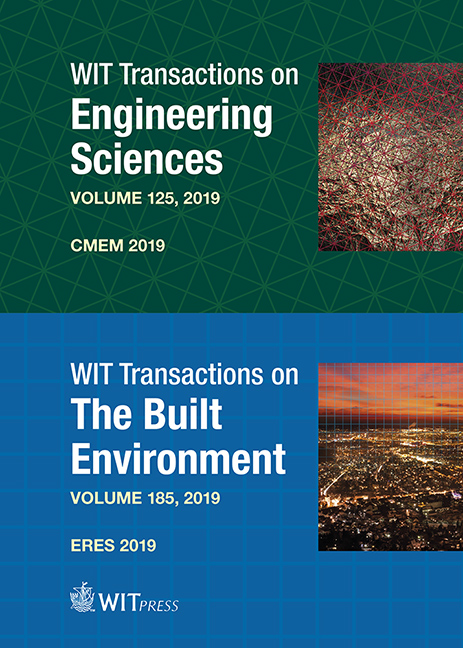NON-LINEAR NUMERICAL MODELS FOR PREDICTING THE BOND STRENGTH OF FIBRE-REINFORCED CONCRETE AT HIGH TEMPERATURES
Price
Free (open access)
Transaction
Volume
125
Pages
12
Page Range
195 - 206
Published
2019
Size
330 kb
Paper DOI
10.2495/CMEM190191
Copyright
WIT Press
Author(s)
FRANCISCO B. VARONA, YOLANDA VILLACAMPA, FRANCISCO JOSÉ NAVARRO-GONZÁLEZ, DAVID BRU, FRANCISCO JAVIER BAEZA
Abstract
The steel to concrete bond mechanism is critical to address the behaviour of reinforced concrete structural members. Although this mechanism can be compromised during a fire, it may be one of the least researched phenomena in concrete technology and is not addressed in the design codes and standards. In this work, we present a thorough review of the experimental data available on this topic, focusing on fibre-reinforced concrete. The data allow us to study the evolution of the bond strength as a function of three variables: the exposure temperature, the type of fibre and the volume fraction. A linear multiple regression is initially carried out, followed by a series of non-linear numerical models. These models are built using a methodology based on the finite element method combined with the formulation of the Galerkin method. The numerical models have been developed for different degrees of complexity. The error measurements obtained with the linear regression and the numerical models are compared in order to present a prediction model. The selected model is then validated for different values of the independent variables. This process supports the discussion of the influence that the independent variables have in the evolution of the bond strength between steel reinforcement and fibrereinforced concretes exposed to high temperatures.
Keywords
fibre-reinforced concrete, high temperature, bond strength, non-linear numerical models





